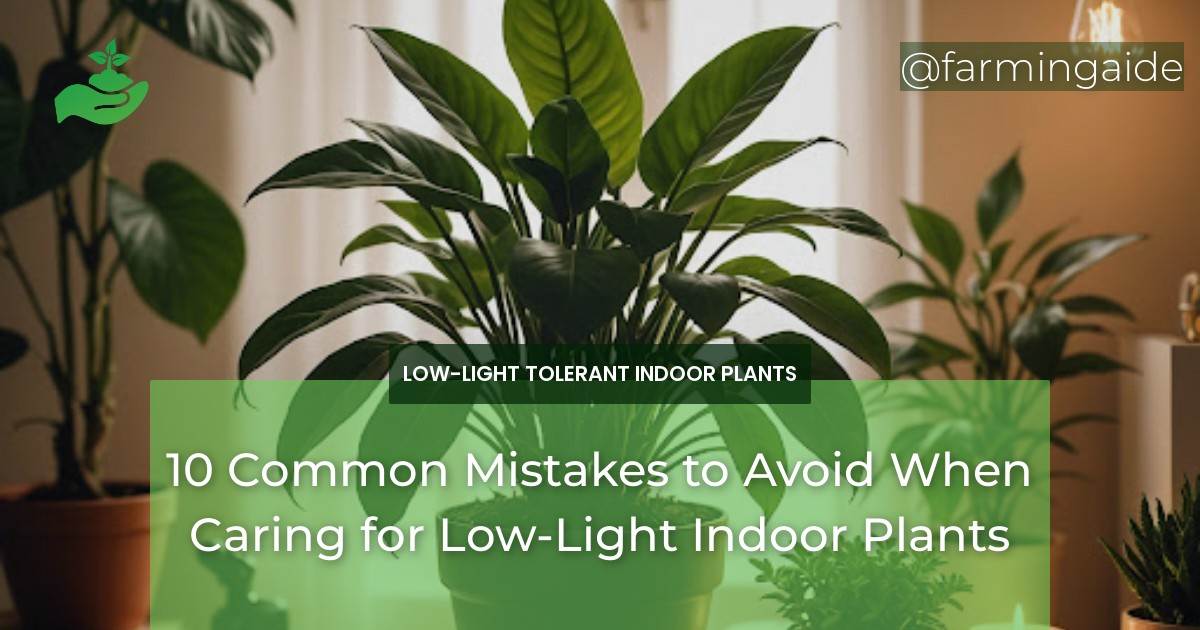Are you struggling to keep your low-light indoor plants thriving? You’re not alone! Many of us make common mistakes that can lead to our plants’ demise. In this article, we’ll explore the top 10 mistakes to avoid when caring for your low-light indoor plants, so you can create a healthy and thriving environment for your green friends.
Key Takeaways
- Avoid overwatering by checking the soil moisture regularly.
- Ensure proper drainage to prevent root rot.
- Provide consistent light exposure and adjust according to the plant’s needs.
- Maintain ideal humidity levels for optimal growth.
- Use the right soil type and avoid over-fertilizing.
Understanding Low-Light Indoor Plants
Low-light indoor plants are specifically adapted to survive in environments with limited natural light. These plants have evolved to thrive in conditions with reduced light intensity, making them perfect for indoor spaces. However, this doesn’t mean they’re immune to neglect or improper care.
Before we dive into the common mistakes, it’s essential to understand the unique needs of low-light plants. By recognizing their requirements, you can provide the best possible care and create a thriving environment.
Common Types of Low-Light Plants
| Plant Type | Light Requirements |
|---|---|
| Pothos | Low to medium light |
| Snake Plant | Low light |
| Peace Lily | Medium to bright indirect light |
Ideal Light Conditions for Low-Light Plants
Low-light plants generally require indirect light, which means placing them near a north-facing window or using sheer curtains to filter the light. Avoid direct sunlight, as it can cause scorching and discoloration.
East- and west-facing windows are ideal for low-light plants, as they receive gentle, indirect light. South-facing windows can work, but be cautious of intense sunlight and use shading methods if necessary.
Mistake 1: Overwatering
Overwatering is a common mistake that can be detrimental to your low-light plants. When the soil is consistently waterlogged, it can lead to root rot and cause the plant to decline.
ALSO READ
Signs of Overwatering
Watch for these signs to determine if you’re overwatering your low-light plants:
- Yellowing or droopy leaves
- Soft, mushy stems
- Water pooling around the base of the plant
Correct Watering Techniques
To avoid overwatering, check the soil moisture by sticking your finger into the soil up to the first knuckle. If the soil feels dry, it’s time to water. Water your plants when the top inch of soil feels dry, and avoid getting water on the leaves to prevent fungal diseases.
Use a well-draining potting mix to prevent waterlogged soil. If you notice water pooling, stop watering and let the soil dry out slightly before resuming.
Mistake 2: Inadequate Drainage
Inadequate drainage can lead to waterlogged soil, which is detrimental to low-light plants. Make sure your pot has proper drainage holes to prevent water from accumulating in the soil.
ALSO READ
Importance of Proper Drainage
Proper drainage is crucial for healthy root growth and preventing root rot. When water accumulates in the soil, it can cause the roots to rot, leading to plant decline and death.
Solutions for Improving Drainage
To improve drainage, use a well-draining potting mix and ensure your pot has adequate drainage holes. You can also add a layer of small rocks or broken pottery at the bottom of the pot to enhance drainage.
Repot your plant in the spring or summer using a fresh, well-draining potting mix. This will give the roots room to grow and reduce the risk of waterlogging.
Mistake 10: Lack of Patience and Consistency
Low-light plants require patience and consistency in their care. Avoid neglecting your plants and ensure you’re providing the necessary care and attention.
The Role of Consistency in Plant Care
Consistency is key to creating a thriving environment for your low-light plants. Establish a routine for watering, fertilizing, and pruning to ensure your plants receive the necessary care.
Tips for Maintaining a Consistent Routine
Create a schedule for watering and fertilizing your plants. Set reminders or put notes on your calendar to ensure you’re providing consistent care. Be flexible and adjust your routine as needed based on the plant’s response.
Conclusion and Final Tips
Avoiding common mistakes is crucial for creating a thriving environment for your low-light indoor plants. By understanding the unique needs of these plants and recognizing potential pitfalls, you can provide the best possible care and enjoy the benefits of indoor gardening.
Remember to monitor your plants regularly, adjust your care routine as needed, and show patience and consistency in your care. With these tips, you’ll be well on your way to creating a lush and thriving indoor oasis.


